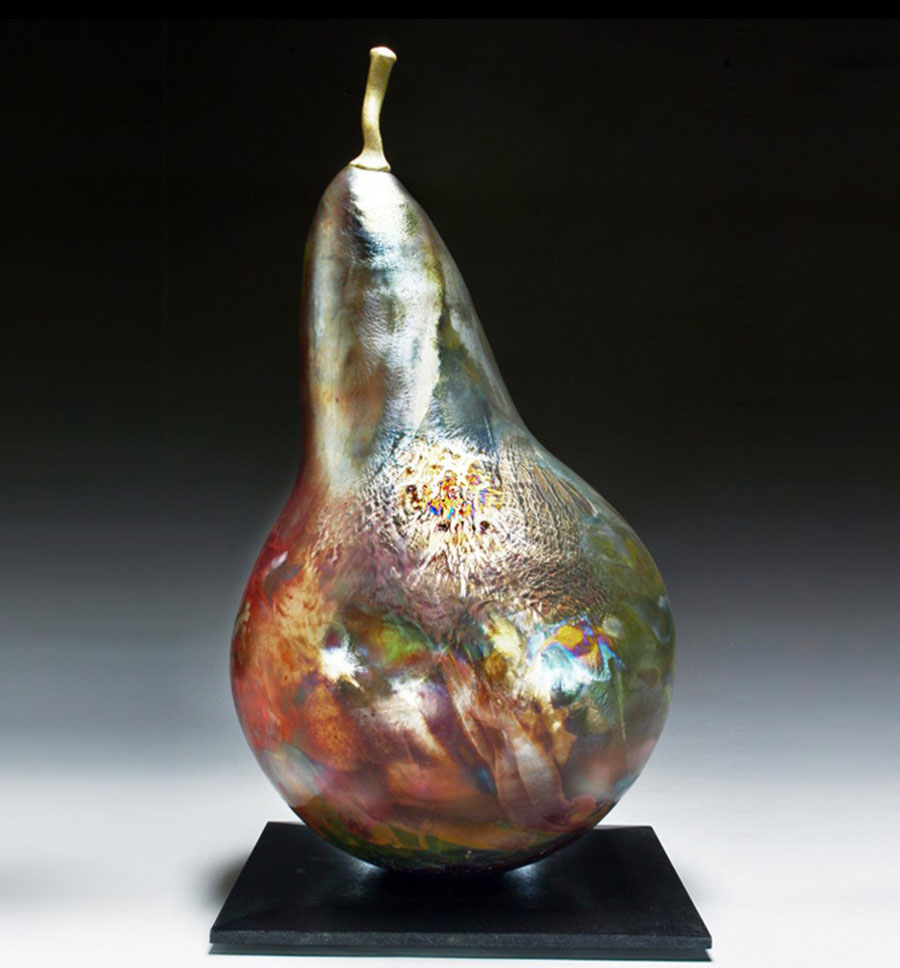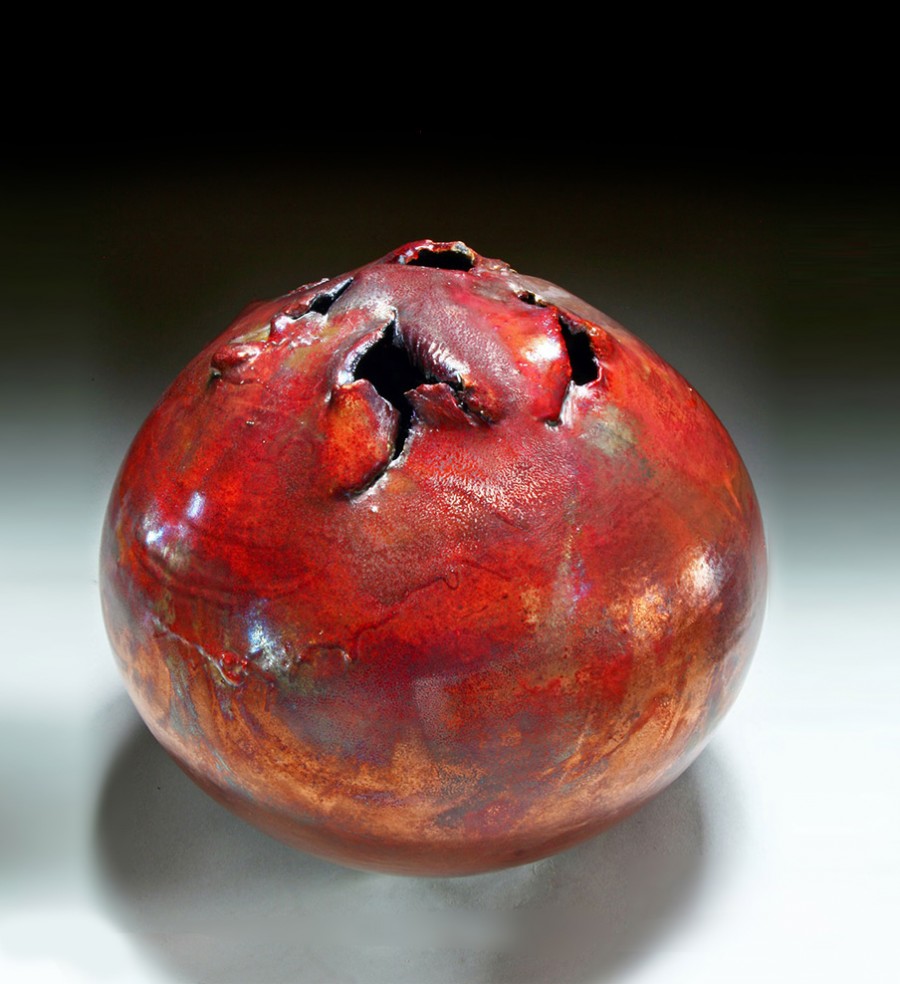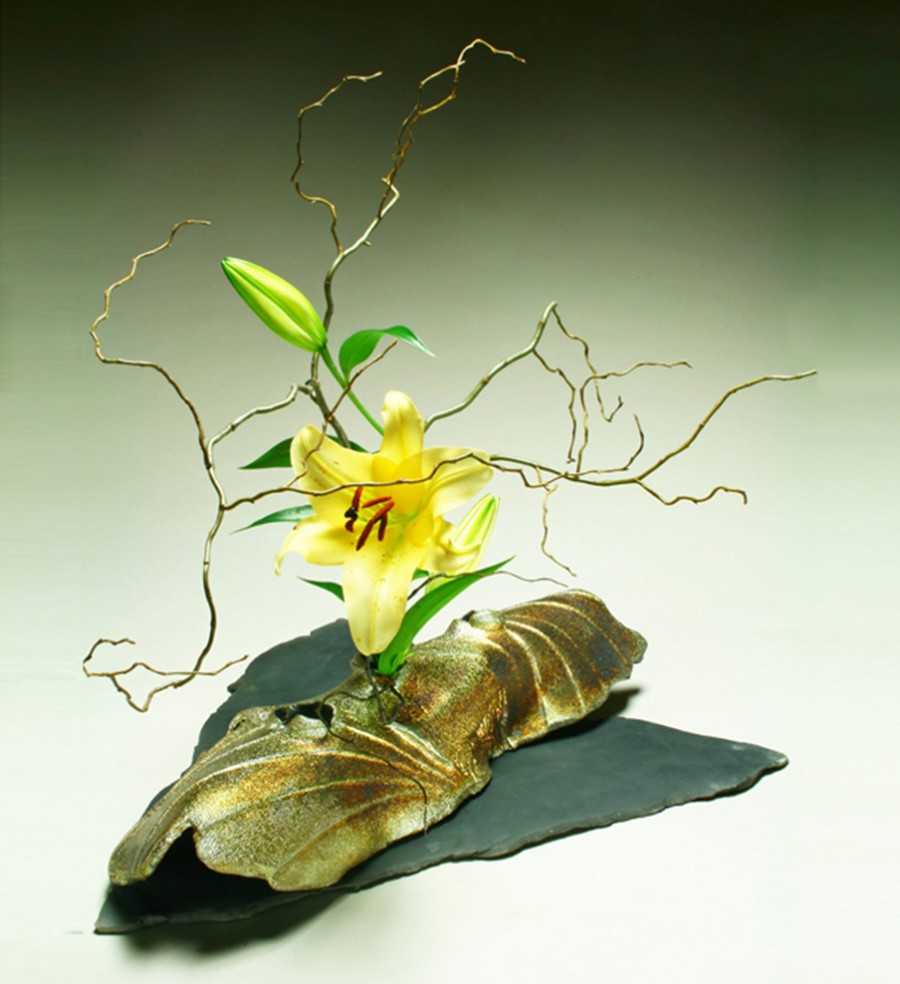By OGP Editors / Steven Forbes-deSoule, and Erica Mueller Provides File Photos
Oh Good Party
A valuable artwork is not simply an accessory; it comes to life with its meanings. The creation of pottery works allow much creativity and unpredictability. The indigenous tweaks to the creation process results in unique expressions. Whether exquisite, down to earth, elegant, colourful, or carefree, the ware is conveys life and meaning instilled by its creator. The discussion of a “good” piece of work is endless, but what is the definition of “good”? And how do we know that it is good enough to be invested in or collected? The “ware” is dead; but the “art” is alive. Each period within every dynasty in China, there have been new types of pottery created, new techniques, or new styles; albeit these invaluable expertise has been lost through time. When we collect historical pottery, we are not collecting the vessel themselves, but rather, the hidden history, culture, heritage, and the artist’s thoughts. The background of the creation is what deems an artwork valuable. A collection without a story does not last.
Background
Steven Forbes-deSoule is a raku pottery artist. He began his professional career in 1975, and has been firing pottery using the raku technique for more than 35 years. Forbes-deSoule established his own pottery studio in Atlanta after receiving a Masters in Visual Arts and Ceramics from the Georgia State University in 1980. Soon after becoming a professional pottery artist, he began developing his own glaze recipes, which has contributed to his one of a kind pieces. Forbes-deSoule’s works have been collected by museums, enterprises, and private collectors. He was also selected to be part of “100 Southern Artists”, produced by Schiffer Publishing Co. He currently resides in western North Carolina.
Interview
OGP:Pottery is the art of combining clay, sculpting and glazing techniques, as well as the control over fire and temperature. The “fire” is the medium which transforms the “clay” into “pottery”. Regardless of the creativity, design, and mold, without the help of fire there would be no finished pottery works. It is reborn within the fire. Steven, could you tell us a little bit about your artistic career?
Steven:I had no interest in art growing up. My older brother was the artist in the family and I’d hear my dad yell at him to stop painting and drawing, and go outside and throw the ball around. So, that’s what I did: I played sports growing up. I majored in advertising in college and after graduating in 1968 I spent 3 years working in public relations in the Navy. I was actually the personal aide to the admiral who was the Chief of Information or the head PR man in the Navy. After the Navy I had 2 short-lived corporate jobs. I couldn’t stand either one, living for the weekends and feeling sick about going to work on Monday mornings. So, at 27 I didn’t have a clue how I wanted to spend my life, but I knew the corporate world wasn’t it. I went to Atlanta to visit a friend, liked it and decided to relocate there and go back to school at Georgia State University, which had a post graduate program where I could just take classes without being in a degree track. My girlfriend then, who is now my wife, suggested we take a pottery class together. We did and I wasn’t very good, but I had a lot of fun, so I decided to continue classes in that department. Five years later (1980), I received my Masters in Visual Arts. I really enjoyed the studio and didn’t really want to be a full time teacher, so I converted my basement into a clay studio. I couldn’t afford a large downdraft reduction kiln, so I built a raku kiln in my backyard and started doing that kind of firing exclusively. After a short-while, I fell in love with raku and that’s all I’ve done for the last 36 years. Firing raku is like being a kid at Christmas. It’s all about serendipity and surprise, as one never knows for sure what will emerge from the reduction chamber.
Oh Good Party
The past 50 years of “American raku” has been influenced by the combination of traditional and contemporary Japanese, American, as well as Chinese pottery. There have been pottery artists exploring various styles, including expressionism, minimalism, hyperrealism, pop art, and realism; all contributing to the advancement of this industry like never before.
OGP:How romantic is it to be able to build an exciting career with someone you love! Now you mentioned that you have fired raku exclusively for the past 36 years. The raku firing technique originated in Japan, and appeared as early as the 16th century, albeit it was limited to the use by a specific school of Japanese tea ceremony. The technique was not introduced to America until fairly recently. In 1954, ceramic sculptor Peter Volkous advocated for the free-form expression, and was a leader in the “abstract expressionism” movement. The past 50 years of “American raku” has been influenced by the combination of traditional and contemporary Japanese, American, as well as Chinese pottery. There have been pottery artists exploring various styles, including expressionism, minimalism, hyperrealism, pop art, and realism; all contributing to the advancement of this industry like never before. The raku technique is unique in its plasticity, especially because the glaze contains metal oxides, which helps create a colourful metallic barrier on the surface of the pottery; while speed cooling techniques may lead to breaking ice effects and tiny cracks, which are beautiful visuals. In addition, even minor variations in the process lead to completely different presentations; hence pottery works fired with the pottery technique are all one of a kind and extremely difficult to replicate. The disadvantage is that raku fired vessels cannot be used as tableware due to the lead, boron, and other metals used.
Steven:Raku is a special kind of ceramic firing that entails firing one or a small number of pieces at a time in a small kiln, which is heated up rapidly for 1 to 1 1⁄2 hours, to 1800–2000 °F. The kiln is then opened and the hot ware is removed. This is where American raku and Japanese raku diverge. American raku is then placed in combustible materials such as wood chips and dry leaves on the ground or in a metal can. I prefer using newspapers. Of course it immediately catches fire and the ware is then covered creating an oxygen-starved atmosphere, which is the reduction chamber. This is where the serendipitous, magic occurs and a variety of effects are achieved. It cools rapidly and when removed from the reduction chamber, the ware is cleaned or in the case of the “space rock” glaze, it’s abraded.
Oh Good Party
Pottery is a substantial and popular option of collection. Chinese ceramic pottery was invented during the rulings of Emperors Fu Hsi and Shen Nung; and Chinese porcelain pottery was developed during the Han Dynasty. The Terracotta Army can be seen as the most symbolic of Chinese ceramic pottery; while the peak of ceramic pottery was seen during the Tang dynasty through the Tang figurines and the tri-coloured pottery. However, the development of the porcelain pottery during the Song dynasty made it the more popular and widespread option. Xuande and Chenghua porcelain works in Ming Dynasty are particularly outstanding. In the Qing Dynasty, they tended to be exquisite and luxurious. Even the same dynasty has different development stages and era characteristics. Not to mention that the pottery of every other historical dynasties all had their unique charms and features.
OGP:The space rock and magical effects created from your glaze recipes are absolutely stunning! Pottery is a substantial and popular option of collection. Chinese ceramic pottery was invented during the rulings of Emperors Fu Hsi and Shen Nung; and Chinese porcelain pottery was developed during the Han Dynasty. The Terracotta Army can be seen as the most symbolic of Chinese ceramic pottery; while the peak of ceramic pottery was seen during the Tang dynasty through the Tang figurines and the tri-coloured pottery. However, the development of the porcelain pottery during the Song dynasty made it the more popular and widespread option. Not to mention that the pottery of every other historical dynasties all had their unique charms and features. Ceramic and porcelain potteries differ in that ceramic pottery is fired at a lower temperature, and is therefore less durable than porcelain. The ingredients used in the two potteries are also different. Ceramic pottery uses a variety of clay, while porcelain pottery is limited to specific types such as kaolinate, giving it the translucency that distinguishes it from ceramic pottery. The glaze used for the two are also different. Almost all pottery artists create their own glaze recipes.
Steven:The beauty and simplicity of Asian pottery is amazing. It also seems to have a special energy that is unexplainable. About 20 years ago, I started developing all of my own glaze recipes, which are what make my pottery unique. I love change and am always looking for new glaze surfaces. Doing the same thing over and over just because it’s popular and sells bores me “to death.” I’m currently working on a new, beautiful surface I call, “space rock glaze.” It’s very textured and sparkly! Also, about a year ago, I started making raku wall pieces, which has been a lot of fun. I just turned 70 and realize that my days of throwing large amounts of clay will soon be over due to the stress on my hands. Making tiles seems like a natural progression and the wall pieces offer me the opportunity to continue doing what I love.
Steven Forbes-deSoule
Every day I wake up surrounded by an ever- changing landscape, which is what inspires me. For artists, the natural environment - towering mountains, meandering water currents, galaxy night sky, sunrise and sunset - can be more focused on creation.
OGP:Your wall pieces collections are beautiful. They remind me of the Chinese porcelain tile paintings, which are created through a very rigorous and meticulous process. This art form was invented during the Ming dynasty, and was mastered during the mid-Qing dynasty. It is very characteristic of the Jangxi culture. It is created by hand painting the flat porcelain tile with a special type of paint, it is then glazed and fired under high temperatures for the finishing product. Compared with paper silk paintings, the porcelain tiles are more durable, and therefore often a better choice for a long-lasting collection.
Steven:Yes, once the work is done, the colours will remain permanently. My raku pottery breaks free from the traditional “applied arts”. The vessels are decorative rather than practical. Nevertheless, they are appreciated by many couples and entrepreneurs between 45 and 60 years old.
OGP:What are your inspirations? Was there anything or anyone significant that has influenced your pottery?
Steven:What I see in nature is my major influence. My wife and I built our home and my studio on a mountainside in western North Carolina 24 years ago. Every day I wake up surrounded by an ever- changing landscape, which is what inspires me. For artists, the natural environment — towering mountains, meandering waters, the Milky Way at night, sunrises and sunsets — can be more focused on creating. In the pottery world, my major influence has been Paul Soldner, who is credited with starting American or Western Raku.
Steven Forbes-deSoule
A "good" pottery has not only a beautiful shell, but also an inner expression. The artist shows his inspiration and creativity through the pottery. I am turning 70 years old; but I will keep going as long as I’m physically able and continue developing new and exciting glaze surfaces, a collection I'd love to make for you as well.
OGP:Paul Soldner (1*) was an outstanding pottery artist, he was also known as the “father of American raku” and has influenced contemporary pottery immensely. Soldner’s wall pieces have beautiful texture and they can be categorized as both abstract expressionism as well as the zen-style. We were very honoured to have met him in California in 1995, where we had the opportunity to collect one of his ink painting vases. Soldner’s creations were often spontaneous, hence the unpredicted results left us all mesmerized. We believe that your works are just as unique. 36 years of experience in pottery making is enough to prove your professionalism and success in this field, as we all know, it is more often than not difficult to make a living by selling pottery alone. You are definitely very talented and hardworking.
Steven:Thank you. I was recently chosen to be part of “100 Southern Artists”, which was an honour. My works have been showcased in various galleries. My main gallery is the Ariel Gallery (2*) in downtown Asheville. It’s a fine craft cooperative of 12 local artists, many of whom are nationally known. I also do a few retail shows each year and have recently been focusing more on the Internet. In addition, I try to exhibit in non-profit spaces once or twice a year. I am turning 70 years old; but I will keep going as long as I’m physically able and continue developing new and exciting glaze surfaces.
OGP:Thank for your time today Steven, it was a pleasure to be able to interview an artist as passionate and inspiring as yourself. A valuable artwork is not simply an accessory; it comes to life with its meanings. The creation of pottery works allow much creativity and unpredictability. The indigenous tweaks to the creation process results in unique expressions. Whether exquisite, down to earth, elegant, colourful, or carefree, the ware is conveys life and meaning instilled by its creator. The discussion of a “good” piece of work is endless, but what is the definition of “good”? And how do we know that it is good enough to be invested in or collected? The “ware” is dead; but the “art” is alive. Each period within every dynasty in China, there have been new types of pottery created, new techniques, or new styles; albeit these invaluable expertise has been lost through time. When we collect historical pottery, we are not collecting the vessel themselves, but rather, the hidden history, culture, heritage, and the artist’s thoughts. The background of the creation is what deems an artwork valuable. A collection without a story does not last.
Postscript
Thank you to Steven Forbes-deSoule for the comprehensive discussion of pottery creation and his artistic career.
Notes
1* Paul Soldner (1921 - 2011) was an American ceramic artist, noted for his experimentation with the 16th-century Japanese technique called raku introducing new methods of firing and post firing, which became known as American Raku. He held seven patents related to pottery equipment. While teaching at Scripps College, he organized the Scripps Ceramics Annual - a nationally recognized ceramic exhibition. In addition, as a result of his lifelong friendship with ceramic collectors Fred and Mary Marer, Scripps became the fortunate recipient of the extensive Marer Collection of Contemporary Ceramics. In 1990, Scripps received an NEA Grant to research and organize and exhibition titled, "Paul Soldner:A Retrospective'" that travelled throughout the United States. And 2008 Awarded the Aileen Osborn Webb Gold Medal by the American Crafts Council, NYC, NY.
2* Ariel Gallery, the gallery represents some of Western North Carolina’s finest and nationally recognized artists. Since 2002, Ariel Gallery has provided a wonderful opportunity for the public to view and purchase work directly from these local artists. Owned and operated by the exhibiting artists, this gallery is a premier showcase for original handmade jewelry, ceramics, metalwork, fiber, glass, woodwork and furniture.














Comments